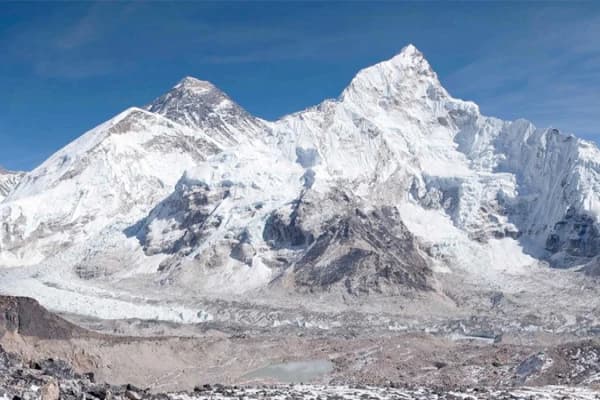The Everest Base Camp and the Annapurna Base Camp are two of Nepal's most iconic trekking spots, luring visitors with breathtaking trekking experiences. Each magic offers unique charm, great views, and cultural experiences that will make it tough to decide which one to pick. Annapurna Base Camp is cheap compared to the Everest Base Camp, which is famous for its height and attraction of standing at the foot of the highest mountain in the world.
Many trekkers who embark on these expeditions speculate about the Annapurna Base Camp height, which is 4,130 meters, compared to the enormous Everest Base Camp height, at 5,364 meters. These two geographically separated treks will take one on an unforgettable adventure to the grand Himalayas.
Below, we outline the critical aspects of each trek—from cost and cultural interactions to breathtaking scenery—that will help you choose the adventure that best suits your trekking aspirations in the Annapurna Base Camp Trek vs. Everest Base Camp Trek comparison.
What to Expect on the Annapurna Base Camp Trek

The Annapurna Base Camp Trek is an experience that perfectly amalgamates breathtaking scenery, diverse cultural participation, and a feeling of adventure unparalleled by most standards in the Annapurna Region. Here's what one gets to witness along the way:
Scenic Beauty and Diverse Landscapes
- Varied Terrain: This region showcases varying ecological features and diverse terrain, from the plush subtropical forests at the base to the more rocky terrains at the top.
- Majestic Peaks: The trek gives an overwhelming glimpse of towering mountains Annapurna I, Machapuchare-Commonly called Fishtail, and Hiunchuli, which form a fantastic backdrop throughout the trek.
- Waterfalls: The route has some beautiful waterfalls, especially during the monsoon. These further enhance the natural scenic beauty and provide serene resting spots.
- Wildflowers: This trail features vibrant wildflowers depending on the season, especially during spring, which enhances the picturesque scenery.
- Sunrises: This is one of the best treks for catching spectacular sunrise views from every end, as the first light pink and orange coloring will never be forgotten.
Annapurna Base Camp Trekking Difficulties and Duration
The Annapurna Base Camp trek difficulty can vary depending on several factors, including fitness level, weather conditions, and trekking experience. Some of the problems include:
- Duration: The trek generally takes 7 to 12 days, depending on your chosen itinerary. You are free to modify it according to your time and physical endurance.
- Walking Hour: A trekking hour can be around 4 to 8 hours daily; the distance covered varies daily, depending upon the section of the trek.
- Elevation Gain: This trek's highest elevation gain, 4,130 meters, is at Annapurna Base Camp. Acclimatization becomes very important regarding altitude sickness.
- Moderate Fitness Required: While this trek is available to most sections of trekkers, a regular level of cardiovascular fitness is recommended, and strength gains should be achieved in the months before the trek to assure readiness for the physical exertion one will go through. The proper preparation for Annapurna Base Camp includes running, cycling, or swimming to improve stamina and leg and core strengthening exercises.
- Rest days: Some programs provide rest days to allow enough acclimatization, allow you to explore the nearby areas, and see the scenery without the continuous strain caused by trekking.
Recommended Read: Best Time for Annapurna Base Camp Trek
Unique Cultural Encounters
- Local Villages: The trekking route passes through some of the most beautiful villages, like Ghandruk and Chomrong, where one can experience the hospitality and village culture of the local Gurung and Magar communities.
- Cultural Richness: Experience decadent cultural richness through traditional music, dance, and local festivals during your trek.
- Warm Hospitality: Interact with the inhabitants, who are usually very willing to share stories, traditions, and personal things about their way of life, adding a personal touch to your trekking.
- Traditional Practices: Observe traditional farming and handicrafts, including weaving and wood carving, showcasing the skills of generations.
- Religious Sites: Includes local monasteries and temples along the way, showcasing communities' spiritual beliefs and practices.
Accommodations and Food Options
- Teahouses: A sufficient number of teahouses on this track provide basic overnight stays so that the trekkers get all the rest they need in a warm environment after a day's walk.
- Cozy Lodges: If comfort is a priority, certain lodges offer an array of amenities, including hot showers and additional dining options, making your stay more pleasant.
- Meal Varieties: Enjoy various meals, including local Nepali dal bhat, momos, and other international cuisines, which suit different tastes and preferences.
- Social Dining Experience: Teahouses allow dining in groups, thus providing a social experience with good companionship over hearty meals.
- Local Ingredients: Most meals are freshly prepared with locally sourced ingredients, enabling you to enjoy an authentic taste while helping the local farmers and other businesses.
What to Expect on the Everest Base Camp Trek

The Everest Base Camp Trek is an epic adventure that promises views out of this world, thrills galore, and unique cultural experiences awaiting at every bend. Here's one thing that one can expect along the way:
Awe-Inspiring Scenery and Majestic Peaks
- Iconic Views: Spectacular views of some of the world's highest peaks, such as Mount Everest, Lhotse, and Nuptse, greet the eyes, making every step a visual treat.
- Dramatic Landscapes: As you approach Everest Base Camp, you will encounter dramatic landscape changes, from rhododendron forests to rugged high-altitude glaciers.
- Khumjung Valley: The picturesque Khumjung Valley, with the stunning Ama Dablam peak and typical Sherpa villages between the mountains, offers a very appealing trek.
- Glacial Lakes: If the trek is extended beyond base camp, breathtakingly beautiful glacial lakes, like Gokyo Lakes, with their striking turquoise colors, can be found.
- Stupas and Monasteries: On the way, you will encounter ancient stupas and monasteries, which provide stunning visuals and a sense of the region's spiritual importance.
- Wildlife Encounters: The wildlife on the Everest Base Camp trek is one of the unique highlights of this iconic journey. Sightings of Himalayan Thars, musk deer, elusive snow leopards, and vibrant bird species like the Danphe and Himalayan Griffon are common.
Everest Base Camp Trekking Difficulties and Duration
The Everest Base Camp trek's difficulties include steep ascents, rocky paths, and the challenges of high-altitude trekking, which can lead to altitude sickness. Some of the problems:
- Duration: It usually takes 12 to 14 days, depending on your route choice and speed, because it allows ample time for acclimatization and sightseeing.
- Daily Hiking Hours: Be prepared for a moderate walk of about 5 to 8 hours each day; some days will involve longer walks to higher altitudes or adjustment for acclimatization.
- Higher Altitude: The altitude achieved on this trek at Everest Base Camp is 5,364 meters; hence, preparation for altitude sickness and good acclimatization practices will be greatly needed.
- Challenging Terrain: Parts of the trail are steep and rocky, requiring good trekking shoes and a moderate level of physical fitness; therefore, pre-training should be undertaken in advance.
- Rest Days: Almost all the itineraries include foreseen rest days for acclimatization and adjustment to the high altitude, with the chance to enjoy the spectacular surrounding scenery.
Recommended Read - Everest Base Camp Trek in 2025 and Beyond
Rich Cultural Encounters
- Sherpa Culture: This trek offers a peek into one of the world's most unique cultures: the Sherpas. They are known for their excellence in mountaineering and their hospitality.
- Tengboche Monastery: The famous Tengboche Monastery is a monastic village instantly recognized as an essential spiritual hub among Sherpas. Here, you can witness prayer ceremonies and catch some striking views of Everest.
- Local Villages: Hike through beautiful Sherpa villages like Namche Bazaar and Dingboche, where one can learn about the local culture, folklore, and industrial rhythms of rural life.
- Local Festivals and Traditions: If the trek timing allows, participate in or observe some local festivals, which are times of color and cultural importance.
- Local Cuisine: Sample traditional Sherpa food, including dal bhat and local pastries, to experience the rich cultural heritage.
Accommodations and Food Choices
- Teahouses: A row of teahouses has been lined on the route, providing basic overnight facilities and warm welcomes to the trekkers to rest in.
- Comfortable Accommodations: Private rooms can be available in teahouses, accompanied by an attachment to make one comfortable after a long hike.
- Varieties of Food are Available: The teahouses offer a variety of food items, from local to international cuisines, so you will have ample choices to rejuvenate yourself after a whole day of trekking.
- Everyday Dining: Most of the time, dining is provided in standard dining rooms where the trekkers share tales of experiences with others.
- Local Ingredients: The food has locally sourced ingredients, enabling you to taste the natural flavors of your home while supporting the economy.
Comparing Costs: Annapurna Base Camp Trek vs. Everest Base Camp Trek
Understanding the cost of Annapurna Base Camp and Everest Base Camp treks will go a long way in planning a trekking adventure. Here is a detailed comparison:
Annapurna Base Camp Trekking Costs Overview
Annapurna Base Camp Trek Cost: Generally, this trek in Annapurna Base Camp costs from $500 to $1,500, depending on your choice of trekking agency, group size, and the number of days your itinerary will have.

Annapurna Base Camp Short Trekking - 8 Days - US$899
This Annapurna Base Camp Short Trek aims to give people incredible mountain views while enabling them to learn more about the area’s culture; hence, it’s suitable for those who want short, exciting holidays.
Annapurna Circuit Trek -10 Days - US$751
The Annapurna Circuit Trek - 10 Days is a thrilling adventure that offers a condensed version of the classic Annapurna Circuit. This trek takes you through some of the most scenic landscapes in the Annapurna Region, including lush green valleys, traditional villages, and dramatic mountain views. The journey typically starts from Chame and leads you to the famous Thorong La Pass (5,416m), the trek's highest point, offering panoramic views of the surrounding peaks.
Annapurna Circuit and Base Camp Trek - 18 Days - US$1199
The 18-day Annapurna Circuit and Base Camp Trek is a journey that combines the best of both worlds—the iconic Annapurna Circuit and the breathtaking Annapurna Base Camp. This epic trek offers unparalleled views of towering peaks, lush valleys, and diverse landscapes, making it a bucket-list experience for outdoor enthusiasts and nature lovers.
Annapurna Panorama Trek - 6 Days - US$470
The Annapurna Panorama Trek offers a perfect escape into some of Nepal's most stunning landscapes in just 6 days. If you need more time but still want to experience the beauty of the Annapurna Region, this trek is ideal. You'll pass through charming villages, walk through lush forests, and be treated to breathtaking views of the Annapurna and Dhaulagiri mountain ranges.
ABC Trek with Poon Hill and Mardi Himal - 17 Days - US$1650
ABC Trek with Poon Hill and Mardi Himal is a 17-day trekking holiday that involves the famous ABC trek along with Poon Hill’s mesmerizing views and the off-the-beaten-path Mardi Himal Trek. This trek ranges from dense forests to terraced farms and finally to the spectacular views of the Annapurna and Dhaulagiri mountain ranges.
Annapurna Circuit with Tilicho Lake Trek- 14 Days - US$975
Experience the Annapurna Circuit with Tilicho Lake Trek, a 14-day journey that blends stunning mountain vistas, diverse landscapes, and the sacred beauty of Tilicho Lake. This trek is perfect for those eager to explore the Annapurna Region’s natural beauty and rich cultural heritage without facing the extreme challenges of higher-altitude treks.
Mardi Himal Trek - 9 Days - US$950
The 9-day Mardi Himal Trek offers a captivating journey through the serene landscapes of the Annapurna region. Trekkers have awe-inspiring views of snow-capped peaks, lush forests, and traditional Nepalese villages. This lesser-known trek is gaining popularity among adventure seekers for its pristine beauty and tranquil trails.
Ghorepani Poon Hill Trek - 6 Days - US$550
The 6 days Ghorepani Poon Hill Trek is a popular and relatively short trekking adventure in the Annapurna region of Nepal, offering stunning views of the Himalayas and cultural experiences along the way. Starting from Nayapul, the trek takes you through picturesque villages, terraced fields, and lush rhododendron forests, culminating in a sunrise ascent to Poon Hill, one of the best vantage points in the region.
Everest Base Camp Trekking Costs Overview
Everest Base Camp Trek Cost: Treks to Everest Base Camp are generally more expensive. Due to its longer duration and higher expedition cost, this particular trek's costs vary from $1,200 to $2,500.

Everest Panorama Trek - 9 Days - US$1150
The Everest Panorama Trek is an ideal adventure for those who want to experience the beauty of the Himalayas without committing to an entire Everest Base Camp trek. During this 9-day journey, you'll immerse yourself in Sherpa culture, explore traditional villages, visit ancient monasteries, and enjoy panoramic views of iconic peaks like Everest, Lhotse, and Ama Dablam.
The Everest View Luxury Lodge Trek - 8 Days - US$3890
The Everest View Luxury Lodge Trek is a short and easy trek to the Hotel Everest View, which sits high up in the mountains of northeastern Nepal. It's known as the highest hotel in the world! During these 8 days of Everest View Luxury Lodge Trek, you'll see amazing sights such as Mount Everest, the tallest mountain on Earth, and many other stunning Himalayan peaks. Plus, you'll get a peek into the traditions and culture of the Sherpa people who live in this area by visiting their villages and monasteries.
Everest Base Camp Trek with Island Peak Climb - 19-Day - US$2699
Starting on the 19-day Everest Base Camp trek with Island Peak climb is an unforgettable adventure that promises stunning scenery, cultural immersion, and the thrill of conquering a Himalayan summit. This epic journey begins in Kathmandu, Nepal's vibrant capital, where trekkers soak in the rich culture before flying to Lukla, the gateway to the Everest region.
Gokyo Valley Trekking - 14 Days - US$1125
The Gokyo Valley Trek is a 14-day adventure that takes you through some of the most breathtaking landscapes in the Himalayas. This trek offers a unique opportunity to explore the stunning Gokyo Lakes and the Gokyo Ri peak, experience the vibrant Sherpa culture, and enjoy panoramic views of the world’s highest peaks, including the Everest Region.
Everest Three High Passes Trek -22 Days - US$2900
The Everest Three High Passes Trek is, without a doubt, one of the most thrilling and adventurous journeys you can take in the Everest region of Nepal. It's also known as the Everest Three High Passes Trek because its main feature is crossing three big mountain passes in the Khumbu area: Renjo La, Cho La, and Kongma La. Along the way, you'll be treated to incredible views of some of the world's highest peaks, like Mt. Everest, Mt. Ama Dablam, Mt. Lhotse, Mt. Cho Oyu, and Mt. Makalu.
- Included Services: Both treks include guiding and porter fees, accommodations, and meals, though the Everest treks could also include permits and higher transportation costs.
- Seasonal Variations: Prices can sometimes increase or decrease with the time of year one goes trekking. The high season, spring and autumn, will have higher costs since this is the peak demand at these times.
- Custom Packages: Custom packages are much more expensive for both treks, where one wants to add extra services, like luxury lodging or private guides, to their trek.
Breakdown of Costs
- Permit: A TIMS card and an Annapurna Conservation Area Permit cost around $50 for the Annapurna Base Camp Trek, and a Sagarmatha National Park Entry Permit and TIMS card cost around $60 for the Everest Base Camp Trek.
- Guide and Porter fees: Guides for either trek cost about $25 to $30 per day, and porters usually cost about $15 to $20 per day. One would have to pay more for Everest due to the more fantastic experience required. If you plan to travel alone, check out this article, " Can you Trek Alone," for more information on trekking to Everest Base Camp.
- Accommodation Costs: Prices differ for teahouses, but depending on comfort, one may expect to spend around $5-10 dollars in Annapurna and $10-20 dollars in Everest lodges.
- Meal: The cost estimate for meals per day in the Annapurna region is around $15 to $25 per person. In contrast, in the Everest region, this estimate is higher at $20 to $30 due to high pricing about altitude.
- Transportation Costs: Add extra transportation costs, such as domestic flights to Lukla for an Everest Base Camp trek, which will add $300 to $500 to the total trip price.
Value for Money
- Scenic Value: While both treks have breathtakingly beautiful landscapes, many trekkers believe the Annapurna Base Camp Trek offers a broader and cheaper variety of scenery.
- Cultural Experience: Everest Base Camp is rich in Sherpa culture and history, which enriches the experience for those who want to immerse themselves in local traditions.
- Crowd Factor: Annapurna Base Camp is slightly less crowded than Everest, so trekking in peace might be assured at relatively lower costs.
- Travel Logistics: Travel logistics to the Everest region can be more difficult and expensive than those to the Annapurna region, which may affect the overall trip expenses.
- Overall Adventure: Each trek offers something different, so consider what aspects mean the most to you when weighing the costs versus benefits of each trek.
Scenic Comparisons: Annapurna Base Camp Trek vs. Everest Base Camp Trek
When considering the Annapurna Base Camp Trek vs. Everest Base Camp Trek both offer stunning scenery and showcase different landscapes. The Annapurna Base Camp trek features diverse environments, from lush rice terraces and charming villages to majestic mountain views, including the stunning Annapurna massif.
In contrast, the Everest Base Camp trek presents a dramatic landscape dominated by towering peaks, glaciers, and the iconic Khumbu Icefall, providing a unique and exhilarating backdrop for trekkers. Each trek offers breathtaking sights, making your choice depend on the type of scenery you wish to experience.
Annapurna Base Camp Trek
- The trek starts through beautiful green fields and charming villages, making it a lovely start.
- The walk will lead to thick forests filled with colorful rhododendrons and bamboo.
- There will be striking views of Annapurna's mountains and famous peaks such as Annapurna I and Machapuchare, better known as Fishtail Peak.
- At the base camp, one is surrounded by tall mountains, thus giving it a magical touch.
- Waterfalls and tranquil rivers greet one at every step of this trail.
- The altitude is moderate, going upward to gradually acclimatize the tourists, allowing them enough time to appreciate the varied flora and culture of the local Gurung and Magar communities.
Everest Base Camp Trek
- It all starts in the pretty village of Lukla, where the enchanting charm of the high Himalayas greets you.
- The route passes through Sherpa villages like Namche Bazaar and Tengboche, enabling one to experience their culture and hospitality.
- The view gradually turns breathtaking until it reaches the foot of the tallest mountain in the world, with rugged landscapes and impressive glaciers.
- The pinnacle is Mt. Everest, which stands at 8,848 meters and is a sight.
- No trekker should miss the panoramic view of Everest and surrounding peaks from Kala Patthar Viewpoint.
- Though the higher altitude and more challenging terrain may daunt a few, the scenery would make this trek memorable.
Trekking Challenges: Annapurna Base Camp Trek vs. Everest Base Camp Trek
When comparing the Annapurna Base Camp Trek vs. Everest Base Camp Trek, trekkers face different challenges on each route. The Annapurna Base Camp trek generally has moderate difficulty, with a well-maintained trail and manageable altitude gain, making it accessible for many trekkers.
In contrast, the Everest Base Camp trek poses more significant challenges, including steeper ascents, higher altitudes, and the risk of altitude sickness, requiring a higher level of fitness and preparation.
Annapurna Base Camp Trek
- The trek has been graded as moderately tricky, making it accessible for many trekkers, even beginners.
- Most of the trails are well-marked, allowing easy passage through various landscapes.
- While altitude sickness is less risky than Everest, allowance for proper acclimatization should not be ignored.
- The weather can change anytime so trekkers can expect rain or chilly temperatures everywhere, especially in higher elevation areas.
- Some stretches may be steep, especially when approaching base camp and good physical fitness is needed.
- As it is one of the most popular treks, the facilities all along the route are plentiful and comfortable: teahouses.
Everest Base Camp Trek
- Everest is considered far more challenging because of its altitude and harsh terrain; thus, a trek of this kind may be too demanding for inexperienced trekkers.
- Parts of the track are rocky roads with steep ascents and descents, which require sufficient stamina and physical preparation before the trek.
- The danger of altitude sickness is enormous. Hence, proper acclimatization and hydration during the journey are essential.
- Weather conditions like cold and wind can get extreme, especially in higher altitude parts.
- The days are much longer in trekking, and the hikes can get quite exhausting; hence, one must pace oneself very carefully.
- Still, this challenge amplifies the feeling of achievement when base camp is reached, which makes the whole experience immensely rewarding.
Final Thoughts
Depending on your adventure goals, choosing between the Annapurna Base Camp Trek vs. Everest Base Camp Trek can be a crucial decision. Annapurna Base Camp trekking is usually a budget-friendly option with average difficulty; it is recommended to those trekkers who aim to mix beautiful landscapes and rich cultural experiences. The warm hospitality of the locals and the varied nature—from lush valleys to towering peaks—make the trekking satisfying.
However, if you want to feel the thrill of arriving at the foot of the world's highest mountain, Everest Base Camp is a bit more challenging. This view toward Everest, bigger in price and investment of effort, is something that no words can describe, just like the culture of Sherpas cannot be described.
Whether you’re a beginner or an experienced trekker, Real Adventure has the perfect trek. Explore their offerings today and embark on the adventure of a lifetime!
Customize your trek with us to accommodate weather delays or personal preferences. This approach allows you to adapt to changing conditions and ensures a more personalized adventure.
Trek the Himalayas with Real Adventure Nepal!
FAQs
Which is more challenging: Annapurna Base Camp or Everest Base Camp?
Generally speaking, Everest Base Camp will be more challenging because of the higher altitude and the more precarious landscape. Acclimatization must be slower and more cautious, and there are higher chances of altitude sickness. The challenges make it more suitable for experienced trekkers.
Which one is better: EBC or ABC?
It depends on your choice between EBC and ABC. While the Annapurna Base Camp Trek combines beautiful landscapes and rich cultural experiences, the iconic views of the world's highest peak make Everest Base Camp a must-visit for many trekkers.
How challenging is the Annapurna Base Camp Trek?
The Annapurna Base Camp Trek is moderately complex but accessible to inexperienced and experienced trekkers. The trails are well-marked and have gentle elevation gain. Proper preparation and appropriate fitness will go a long way toward making the trek successful and enjoyable.
What's the difficulty level of Everest Base Camp?
The Everest Base Camp trek contains some of the most challenging routes in the Himalayas and requires at least a pretty good level of physical fitness. A trekker is supposed to be prepared for high altitudes and rugged terrain. Acclimatization and stamina will help someone be safe and enjoy their journey.
Can you see Everest from Annapurna Base Camp?
No, you cannot see Everest from Annapurna Base Camp. Actually, both these places come under different mountain ranges in the Himalayas. Annapurna lies in the Annapurna range, while Everest comes under the Khumbu region. While both offer great views of lofty peaks, Everest cannot be seen from Annapurna Base Camp.



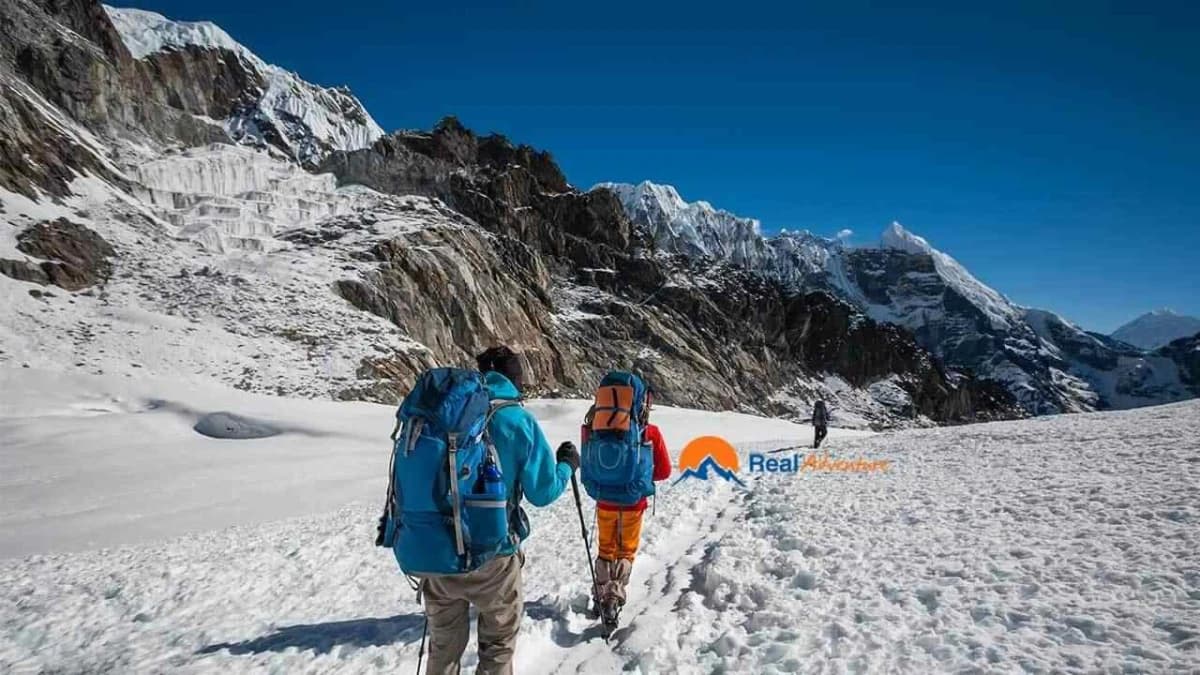
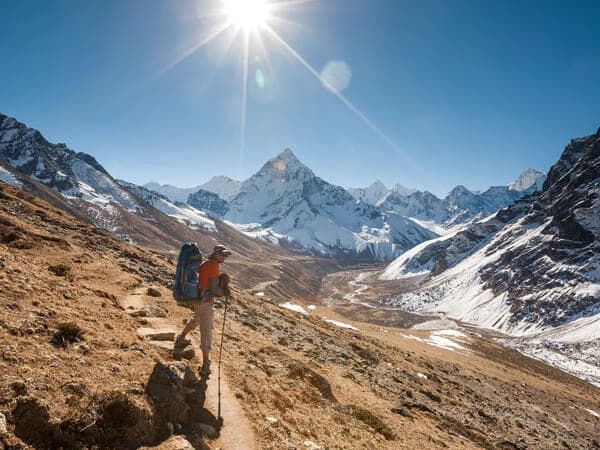
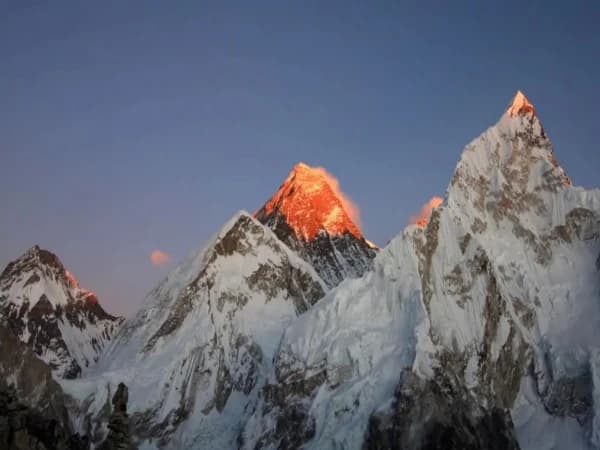

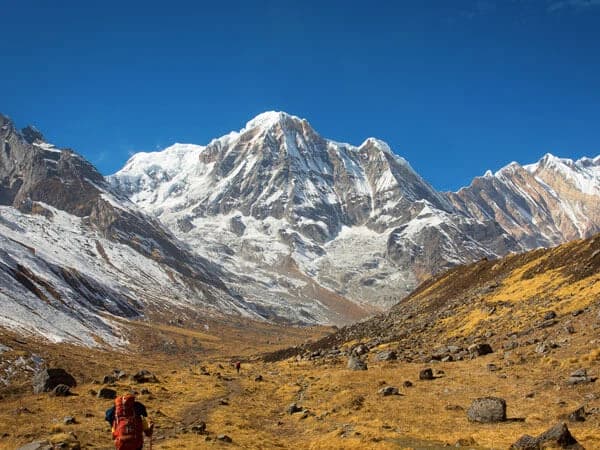

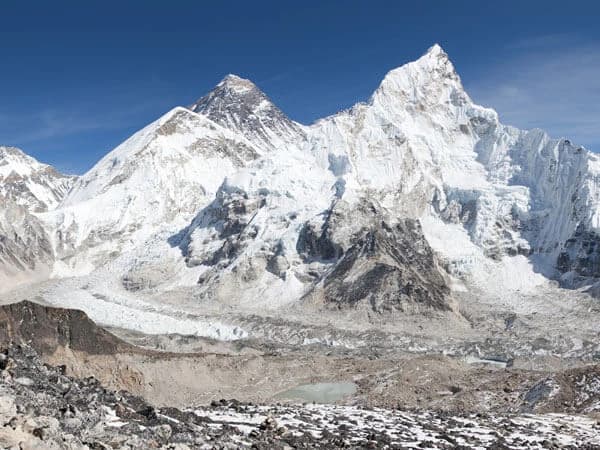
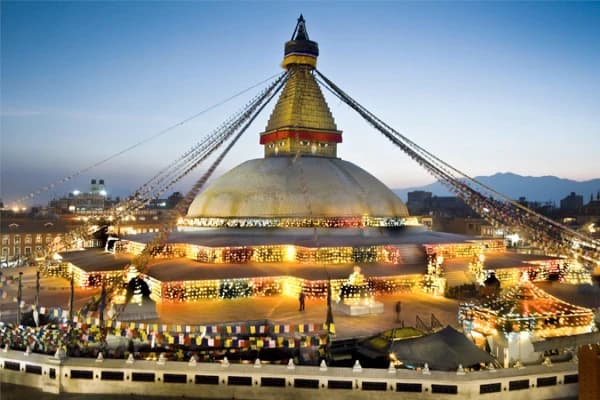
-(5).webp&w=1200&q=75&dpl=dpl_CtNAyRzUAwPdWKDCFxYk5p2VryPh)
